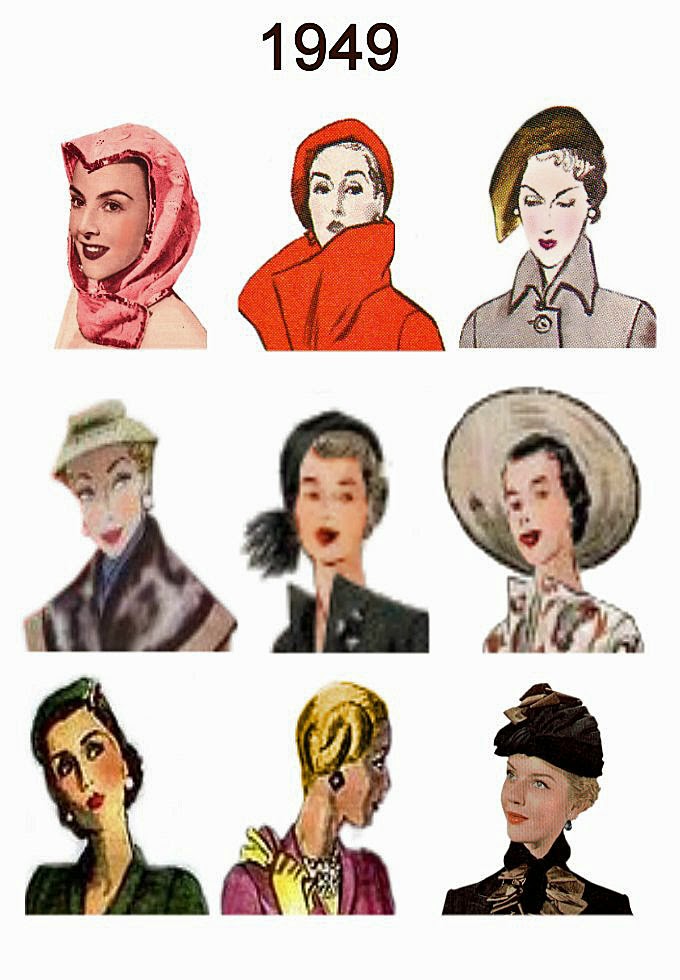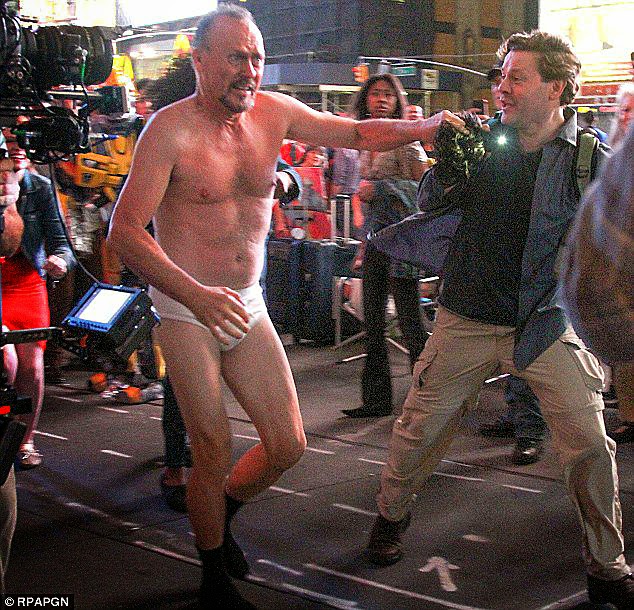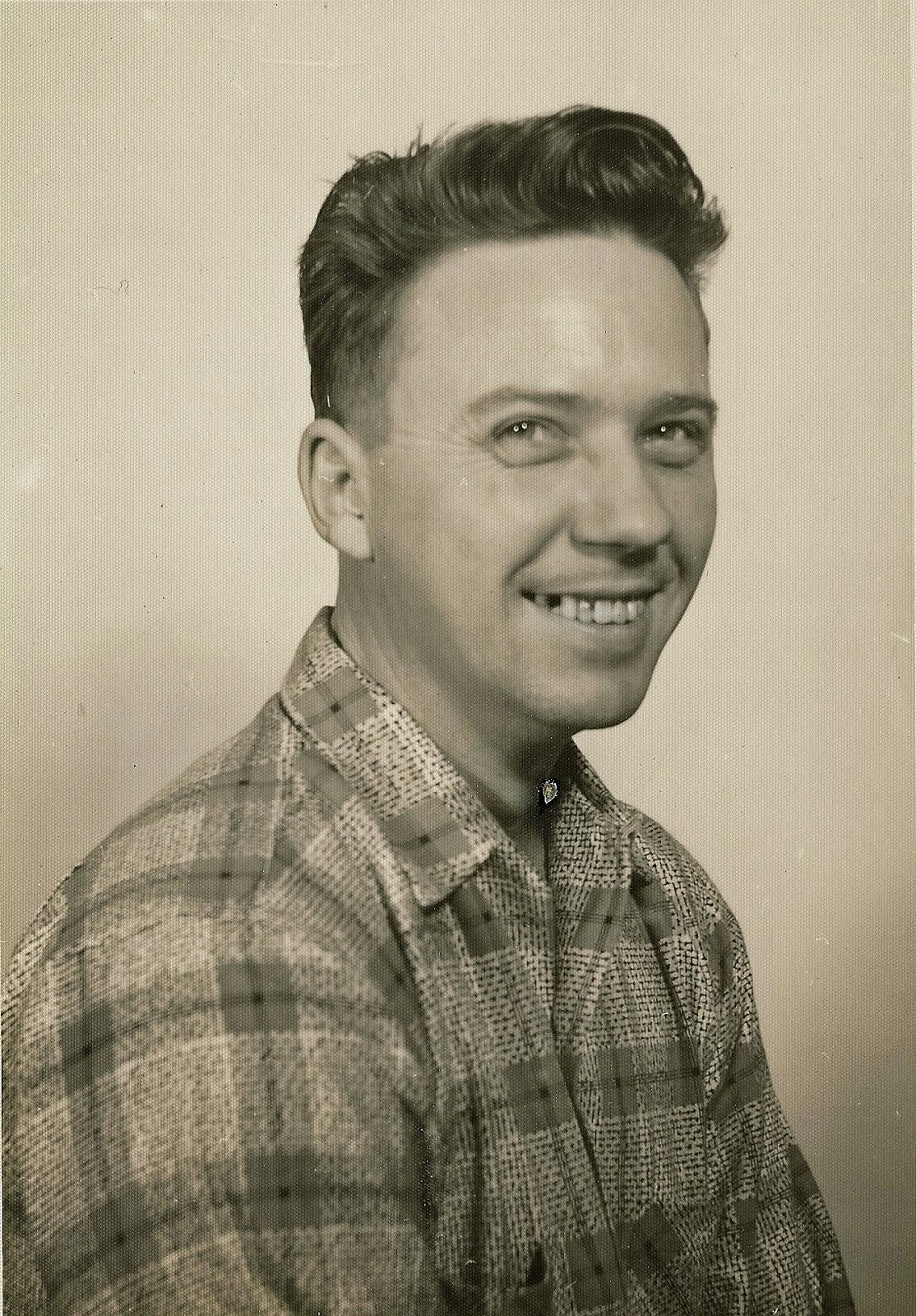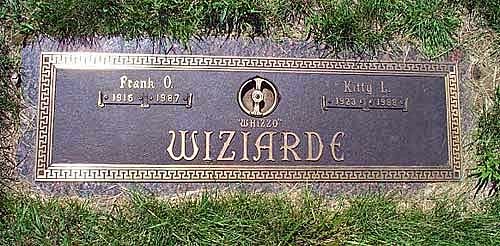2014 celebrity obits: a personal connection
 •Shirley Temple Black [85, Feb. 10]…One Sunday a month, for many years, my parents, sister, and I would drive about an hour to get to our cousins’ farm located in Birmingham, Missouri. I never watched “Shirley Temple’s Storybook,” which ran from 1958-61, except when we visited our cousins. But my cousins did, and we were guests.
•Shirley Temple Black [85, Feb. 10]…One Sunday a month, for many years, my parents, sister, and I would drive about an hour to get to our cousins’ farm located in Birmingham, Missouri. I never watched “Shirley Temple’s Storybook,” which ran from 1958-61, except when we visited our cousins. But my cousins did, and we were guests. So my sister and I watched too.
•Sid Caesar [91, Feb. 12]…
I have dim recollection of watching Caesar’s early TV work, but his wonderful acting in 1963’s “It’s a Mad, Mad, Mad, Mad World” always makes me smile as I also think of my Dad. He had divorced Mom a few months before, so he, my sister, and I were pretty dazed and depressed. Adding to that was the recent assassination of President Kennedy. Not long before Christmas that year, Dad treated us to the movie, in Cinerama, at the Empire Theatre in Kansas City, Mo. Dad laughed at Caesar and his cohorts…big time, nearly falling off his chair. His explosive outbursts made my sister and me crack up even more. I’ll never forget it. We three really needed those laughs.
 •David Brenner [78, March 15]…It was Brenner my second wife, Peggy, wanted to see perform when we vacationed in Las Vegas. He was actually her second choice after Siegfried and Roy. But they were sold out. Peggy made a good choice in David Brenner. He was very funny.
•David Brenner [78, March 15]…It was Brenner my second wife, Peggy, wanted to see perform when we vacationed in Las Vegas. He was actually her second choice after Siegfried and Roy. But they were sold out. Peggy made a good choice in David Brenner. He was very funny. •Mitch Leigh [86, March 16]…
I think of the “Man of La Mancha” composer and associate him with Dr. Richard Rohan, my World Literature professor at Emporia State. When the touring musical was about to play in downtown Emporia, Kansas, Rohan was its greatest promoter, wearing a large “I’ve Seen ‘Man of La Mancha’” button to class every day for weeks. I saw the great production free while ushering it via my Alpha Phi Omega service fraternity.
 •Mickey Rooney [93, April 6]…Here is another great who starred in “It’s a Mad, Mad, Mad, Mad World.” Like Sid Caesar in the same film, Rooney contributed to making my Dad extremely happy. I also have to mention a hilarious bit Rooney did in the late 1950’s on “The Ed Sullivan Show” with Joey Foreman. Rooney played a man on the street who is pranked on a “Candid Camera”-like TV show. Mickey is absolutely hilarious.
•Mickey Rooney [93, April 6]…Here is another great who starred in “It’s a Mad, Mad, Mad, Mad World.” Like Sid Caesar in the same film, Rooney contributed to making my Dad extremely happy. I also have to mention a hilarious bit Rooney did in the late 1950’s on “The Ed Sullivan Show” with Joey Foreman. Rooney played a man on the street who is pranked on a “Candid Camera”-like TV show. Mickey is absolutely hilarious. •Lee Marshall [64, April 26]…It seems like a thousand times I heard Tony the Tiger, along with his animated image, pitch Kellogg’s Sugar Frosted Flakes on Saturday morning TV during the 1950’s and ‘60s. Marshall voiced Tony with that deep, resonant voice. He was “Grrrrreaaaat!”
 •Ann B. Davis [88, June 1]…Davis won an Emmy for portraying Bob Collins’ office secretary Schultzy, on “The Bob Cummings Show,” 1955-59. THIS is the show I associate with her, not “The Brady Bunch.” Bob Collins was a glamour aka cheesecake photographer, and my father loved the show enough to take up photography as a hobby.
•Ann B. Davis [88, June 1]…Davis won an Emmy for portraying Bob Collins’ office secretary Schultzy, on “The Bob Cummings Show,” 1955-59. THIS is the show I associate with her, not “The Brady Bunch.” Bob Collins was a glamour aka cheesecake photographer, and my father loved the show enough to take up photography as a hobby. •James Garner [July 19]…The impact of “Maverick” on the TV audience was so great that when my family visited our cousin’s house in Raytown, Mo. in late 1957, all activity and talking ceased when the show started. We gathered around the TV to enjoy Bret’s latest escapade. James Garner had everything to do with that attraction.
•James Garner [July 19]…The impact of “Maverick” on the TV audience was so great that when my family visited our cousin’s house in Raytown, Mo. in late 1957, all activity and talking ceased when the show started. We gathered around the TV to enjoy Bret’s latest escapade. James Garner had everything to do with that attraction.  •Don Pardo [96, August 18]…As often occurs, when one divorces, one loses friendship with favorite in-laws. My ex-wife’s aunt and uncle, Karen and John, were very near our ages. We were best friends, in fact, seeing each other virtually every weekend for the years their niece and I were married. It was a tradition among us to watch “Saturday Night Live” together, which we had done since the show began in 1975. Don Pardo’s distinctive voice introduced each program.
•Don Pardo [96, August 18]…As often occurs, when one divorces, one loses friendship with favorite in-laws. My ex-wife’s aunt and uncle, Karen and John, were very near our ages. We were best friends, in fact, seeing each other virtually every weekend for the years their niece and I were married. It was a tradition among us to watch “Saturday Night Live” together, which we had done since the show began in 1975. Don Pardo’s distinctive voice introduced each program.  •Richard Attenborough [90, August 24]…A perk of being a film critic is the free screenings of movies not yet released. For many years, I took my daughter with me if the movie would so warrant. “Jurassic Park” was such a film. Shelley was 12 in 1993 when we saw it. Afterwards, on the way back to the car, the impact of the movie was still with her. “Dad,” she said, “I feel like I’ve been with real dinosaurs!” Richard Attenborough’s role as the park keeper no doubt added to the illusion.
•Richard Attenborough [90, August 24]…A perk of being a film critic is the free screenings of movies not yet released. For many years, I took my daughter with me if the movie would so warrant. “Jurassic Park” was such a film. Shelley was 12 in 1993 when we saw it. Afterwards, on the way back to the car, the impact of the movie was still with her. “Dad,” she said, “I feel like I’ve been with real dinosaurs!” Richard Attenborough’s role as the park keeper no doubt added to the illusion. •Robin Williams [63, August 11]…The first time I really appreciated Williams’ stunning gift of humor was when I saw his HBO “Off the Wall” special that my best friend, David Laudick, had recorded on Beta tape in 1978. I was visiting David in Scott City, Kansas when I watched Robin’s creativity stretch from stage to audience to him literally climbing up to the balcony of the theater. This was funny, improvisational, and electric. David has since unexpectedly died, and now Robin.
•Robin Williams [63, August 11]…The first time I really appreciated Williams’ stunning gift of humor was when I saw his HBO “Off the Wall” special that my best friend, David Laudick, had recorded on Beta tape in 1978. I was visiting David in Scott City, Kansas when I watched Robin’s creativity stretch from stage to audience to him literally climbing up to the balcony of the theater. This was funny, improvisational, and electric. David has since unexpectedly died, and now Robin.  •Ben Bradlee [93, October 21]…Nothing impacted my teaching high school journalism like the publishing of both the book and movie of “All The President’s Men.” When the film was released in 1976, interest in journalism, particularly investigative journalism, increased enrollment in college and university journalism programs nationwide. It certainly impacted my j-classes at J. C. Harmon High School. Ben Bradlee’s real-life role as editor of The Washington Post was a vital element.
•Ben Bradlee [93, October 21]…Nothing impacted my teaching high school journalism like the publishing of both the book and movie of “All The President’s Men.” When the film was released in 1976, interest in journalism, particularly investigative journalism, increased enrollment in college and university journalism programs nationwide. It certainly impacted my j-classes at J. C. Harmon High School. Ben Bradlee’s real-life role as editor of The Washington Post was a vital element. Unique ‘Birdman’ grabs four KC Film Critics Circle awards
Whizzo, Ol’ Dad, and Me
 Mom told me about a couple of his early business schemes, one involving Dad’s creative mind. He “invented” an emergency flare that motorists could keep in the car trunk. There were flares sold already, but his flare was somehow different. After his usual pattern of buying business cards, he invested in the materials of manufacturing the flares, including packaging. I assume some kind of gunpowder was required.
Mom told me about a couple of his early business schemes, one involving Dad’s creative mind. He “invented” an emergency flare that motorists could keep in the car trunk. There were flares sold already, but his flare was somehow different. After his usual pattern of buying business cards, he invested in the materials of manufacturing the flares, including packaging. I assume some kind of gunpowder was required.  His show was enjoyed by adults as well as children. If there was a parade anywhere in Greater Kansas City, Whizzo was a featured attraction. For over 30 years, Whizzo was seen regularly on TV, first in Kansas City, and then in Topeka, Kansas. He was a trouper up until his death in 1987.
His show was enjoyed by adults as well as children. If there was a parade anywhere in Greater Kansas City, Whizzo was a featured attraction. For over 30 years, Whizzo was seen regularly on TV, first in Kansas City, and then in Topeka, Kansas. He was a trouper up until his death in 1987. During the summer of 1949, when I was a kiddo of 2, the pre-Whizzo Wiziarde hosted a local Kansas City half hour radio show broadcast live daily on WHB at 11 a.m. from a restaurant in the prestigious Country Club Plaza. The appropriately named Luncheon on the Plaza included women guests, and was geared to the predominately female radio audience. In those days, women guests were aka “housewives.” The show’s gimmick was that interviewed women were supposed to wear hats, and Wiziarde and company would choose the best. The woman with the chosen hat would win a prize.
During the summer of 1949, when I was a kiddo of 2, the pre-Whizzo Wiziarde hosted a local Kansas City half hour radio show broadcast live daily on WHB at 11 a.m. from a restaurant in the prestigious Country Club Plaza. The appropriately named Luncheon on the Plaza included women guests, and was geared to the predominately female radio audience. In those days, women guests were aka “housewives.” The show’s gimmick was that interviewed women were supposed to wear hats, and Wiziarde and company would choose the best. The woman with the chosen hat would win a prize.  Does that premise crack you up as much as it does me? A visual gimmick…on radio? It’s reminiscent of Stan Freberg’s hilarious bit featuring acrobats on radio.
Does that premise crack you up as much as it does me? A visual gimmick…on radio? It’s reminiscent of Stan Freberg’s hilarious bit featuring acrobats on radio.  Using the sparse money we had, perhaps borrowing it, Dad then invested in cutting edge technology, a reel-to-reel tape recorder. In 1949, this was state of the art. He also purchased many blank tapes. Oh yes, he also purchased a device to cut his own 78 rpm records, which he attached to his tape recorder. Dozens of blank discs were needed. A business was born.
Using the sparse money we had, perhaps borrowing it, Dad then invested in cutting edge technology, a reel-to-reel tape recorder. In 1949, this was state of the art. He also purchased many blank tapes. Oh yes, he also purchased a device to cut his own 78 rpm records, which he attached to his tape recorder. Dozens of blank discs were needed. A business was born.  First, he got a call from the telephone company warning him to stop using a public phone for business purposes. Someone had complained, and contacted the phone company. (At that time we had a party line, which made things worse.)
First, he got a call from the telephone company warning him to stop using a public phone for business purposes. Someone had complained, and contacted the phone company. (At that time we had a party line, which made things worse.) Massive Merv Griffin DVD set is must-have for show biz fans
 This is not to say all was song, dance, and comedy in the Griffin Show world. Like Jack Paar before him, Merv’s guest list often included extended and incisive conversations with the likes of Dr. Martin Luther King Jr., Rosa Parks, then former Vice President Richard Nixon, authors Alex Haley and Gore Vidal, and drug culture guru Dr. Timothy Leary. They are all part of this terrifically fun and fascinating DVD set which also serves as a social document of the mid to late 20th Century.
This is not to say all was song, dance, and comedy in the Griffin Show world. Like Jack Paar before him, Merv’s guest list often included extended and incisive conversations with the likes of Dr. Martin Luther King Jr., Rosa Parks, then former Vice President Richard Nixon, authors Alex Haley and Gore Vidal, and drug culture guru Dr. Timothy Leary. They are all part of this terrifically fun and fascinating DVD set which also serves as a social document of the mid to late 20th Century.  As described in the set’s informative 52-page booklet, many of the Griffin shows included were found in private collections, including one gem from Merv’s own video stash. That particular program, helmed by Isaac Hayes, is an hour long, star packed musical salute to vintage Stax recording artists.
As described in the set’s informative 52-page booklet, many of the Griffin shows included were found in private collections, including one gem from Merv’s own video stash. That particular program, helmed by Isaac Hayes, is an hour long, star packed musical salute to vintage Stax recording artists. Incidentally, the shows vary in length from under an hour to 80 minutes, with commercials omitted. Merv’s shows over the years were from 60-90 minutes. Locales also vary, from Hollywood to New York to Las Vegas. Shorter celebrity spots are also added, usually in the “Extras” portion of each disc.
Incidentally, the shows vary in length from under an hour to 80 minutes, with commercials omitted. Merv’s shows over the years were from 60-90 minutes. Locales also vary, from Hollywood to New York to Las Vegas. Shorter celebrity spots are also added, usually in the “Extras” portion of each disc.  From a young Stevie Wonder singing and playing the harmonica to Jayne Mansfield accompanied by her three children (including a toddler named Mariska Hargitay) and their dogs, eye candy and name dropping abound. I am still both pleased and disturbed about seeing the 1985 show featuring Orson Welles. For the first time publicly, Welles talked about his marriage to Rita Hayworth and films, including Citizen Kane. Hours after the taping, Welles died at his home.
From a young Stevie Wonder singing and playing the harmonica to Jayne Mansfield accompanied by her three children (including a toddler named Mariska Hargitay) and their dogs, eye candy and name dropping abound. I am still both pleased and disturbed about seeing the 1985 show featuring Orson Welles. For the first time publicly, Welles talked about his marriage to Rita Hayworth and films, including Citizen Kane. Hours after the taping, Welles died at his home. 
 I feel like splashing the pluses of this boxed set like a Golden Age of Hollywood publicist: SEE Miss Lillian Carter dance with Andy Williams after he sings “Moon River”…Bette Davis and Olivia de Havilland in a salute to William Wyler…the cast of Star Trek II: The Wrath of Khan…the cast of The Golden Girls…the cast of Rocky III…Whitney Houston’s debut…Jerry Lewis doing extreme spit takes with Merv and Richard Pryor…Burt Ward and Adam West of Batman…Lucille Ball and Family…Danny Kaye literally taking over Merv’s show…and Moms Mabley, The Muppets, Mel Brooks, Steve Martin, and onward.
I feel like splashing the pluses of this boxed set like a Golden Age of Hollywood publicist: SEE Miss Lillian Carter dance with Andy Williams after he sings “Moon River”…Bette Davis and Olivia de Havilland in a salute to William Wyler…the cast of Star Trek II: The Wrath of Khan…the cast of The Golden Girls…the cast of Rocky III…Whitney Houston’s debut…Jerry Lewis doing extreme spit takes with Merv and Richard Pryor…Burt Ward and Adam West of Batman…Lucille Ball and Family…Danny Kaye literally taking over Merv’s show…and Moms Mabley, The Muppets, Mel Brooks, Steve Martin, and onward.  Equally fascinating is Merv Griffin himself, a talented, educated, humorous, and extremely good host and interviewer. He leans into his guests’ comments, and listens. It is also obvious he did his homework in preparation. Thanks to Merv, venerable Hollywood movie actor Arthur Treacher enjoyed a happy, late career as Merv’s sidekick and announcer. Treacher is featured on the early shows from NYC, but declined to move when the show relocated to the West Coast in 1970.
Equally fascinating is Merv Griffin himself, a talented, educated, humorous, and extremely good host and interviewer. He leans into his guests’ comments, and listens. It is also obvious he did his homework in preparation. Thanks to Merv, venerable Hollywood movie actor Arthur Treacher enjoyed a happy, late career as Merv’s sidekick and announcer. Treacher is featured on the early shows from NYC, but declined to move when the show relocated to the West Coast in 1970.  The accompanying booklet includes an impressively detailed, lengthy overview of the Griffin show by Steve Randisi and an introduction by Dick Cavett, who is also featured on a couple of the shows.
The accompanying booklet includes an impressively detailed, lengthy overview of the Griffin show by Steve Randisi and an introduction by Dick Cavett, who is also featured on a couple of the shows. Unpredictable ‘Birdman’ is director’s triumph
 Then there is the solo drum-dominant score full of jazz riffs that keeps both the plot and hand-held camera in steady motion. Speaking of camera work, add incredibly demanding cinematography by Emmanuel Lubezki.
Then there is the solo drum-dominant score full of jazz riffs that keeps both the plot and hand-held camera in steady motion. Speaking of camera work, add incredibly demanding cinematography by Emmanuel Lubezki.  After a self imposed retirement from show business, Riggan desperately wants a comeback, but not in a redo of his Birdman character. Instead, he has chosen to direct and star in a hopefully Broadway-bound drama, “What We Talk about When We Talk About Love.” Birdman opens on stage during play rehearsal, and there are immediate obstacles involving egos and equipment malfunctions. From that point, Birdman’s story line careens from backstage to onstage, with most of the action occurring in various dressing rooms and narrow hallways. Do not confuse this sketchy description with the farce Noises Off, which is comedy dominant. However, there are some outrageously funny bits in Birdman, particularly a couple of ribald scenes featuring Norton’s Mike Shiner, an eccentric method actor who is a last minute play replacement.
After a self imposed retirement from show business, Riggan desperately wants a comeback, but not in a redo of his Birdman character. Instead, he has chosen to direct and star in a hopefully Broadway-bound drama, “What We Talk about When We Talk About Love.” Birdman opens on stage during play rehearsal, and there are immediate obstacles involving egos and equipment malfunctions. From that point, Birdman’s story line careens from backstage to onstage, with most of the action occurring in various dressing rooms and narrow hallways. Do not confuse this sketchy description with the farce Noises Off, which is comedy dominant. However, there are some outrageously funny bits in Birdman, particularly a couple of ribald scenes featuring Norton’s Mike Shiner, an eccentric method actor who is a last minute play replacement.  An extended humorous sequence involves an embarrassed but determined Raggan having to walk through crowded Times Square in his briefs and dark socks. It turns out to be a prettier picture than one might envision. It also speaks to celebrity and technology in our culture.
An extended humorous sequence involves an embarrassed but determined Raggan having to walk through crowded Times Square in his briefs and dark socks. It turns out to be a prettier picture than one might envision. It also speaks to celebrity and technology in our culture.  Some moviegoers might have trouble with dreamlike plot devices, like the actual Birdman character frequently talking to Raggan as his alter ego. Then there are a couple of flying sequences. Or three or four.
Some moviegoers might have trouble with dreamlike plot devices, like the actual Birdman character frequently talking to Raggan as his alter ego. Then there are a couple of flying sequences. Or three or four.












